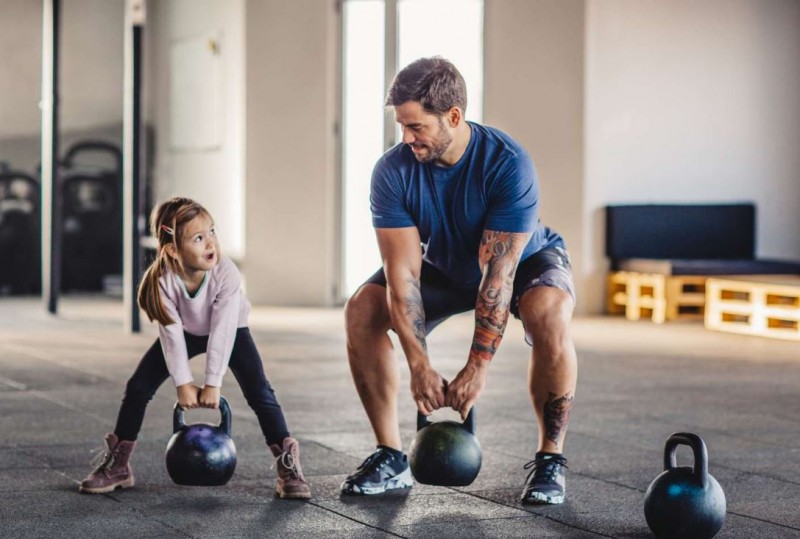
In today's changing lifestyle, the risk of various diseases is increasing, prompting people to become more health-conscious. Many individuals, especially the youth, are increasingly joining gyms to stay healthy and fit. While working out in the gym is generally considered beneficial for health, it's crucial to be aware of the right age to start gym activities, as excessive or inappropriate exercise can lead to problems. Let's explore the recommended age for joining the gym and some suitable exercises for teens.
The Right Age for Gym Joining:
Fitness experts suggest that heavy weight training should commence after the age of 16, considering that bone development is still in progress before this age. Heavy weight training is not recommended for individuals younger than 16 due to potential impacts on bone development. However, there are several exercises that can be performed before reaching this age to promote overall fitness.
1. Gradual Start: Avoiding Intense Workouts Initially
Embarking on a fitness journey requires a gradual approach, especially for individuals new to gym workouts. This principle is rooted in the idea of allowing the body to adapt and build strength progressively. Intense workouts, when initiated abruptly, can lead to various issues such as muscle strain, joint injuries, and overall physical fatigue.
To implement a gradual start, individuals should focus on incorporating low to moderate intensity exercises into their routine initially. This could involve cardio exercises like brisk walking, light jogging, or cycling. These activities not only prepare the body for more intense workouts but also enhance cardiovascular health and stamina. Additionally, introducing flexibility and mobility exercises in the form of dynamic stretches can contribute to improved joint health.
The gradual approach serves as a foundation, preparing the body for more strenuous activities as one progresses in their fitness journey. It allows muscles, joints, and ligaments to adapt and strengthen gradually, reducing the risk of injuries associated with sudden, intense workouts.
2. Choose Easy Exercises: Begin with Simple Workouts
Selecting appropriate exercises is paramount, especially for beginners. Easy exercises that focus on fundamental movements help individuals develop a solid fitness base. These exercises target major muscle groups, improve coordination, and enhance overall body awareness.
Bodyweight exercises like push-ups, squats, lunges, and planks are excellent choices for beginners. These movements engage multiple muscle groups simultaneously, promoting functional strength. Incorporating such exercises also helps in building core stability, an essential component of overall fitness.
In the context of choosing easy exercises, it's crucial to tailor the routine to individual fitness levels. This ensures that individuals can perform the exercises with proper form and technique, minimizing the risk of injuries. As individuals become more comfortable with these basic movements, they can gradually progress to more advanced exercises.
3. Professional Guidance: Seek Expert Advice on Exercise Techniques
One of the key factors in ensuring a safe and effective fitness journey is seeking professional guidance. Fitness experts, such as personal trainers or certified coaches, play a pivotal role in providing personalized advice based on individual fitness levels, goals, and any existing health conditions.
Professional guidance encompasses various aspects, including:
a. Form and Technique: Proper form is critical for preventing injuries and maximizing the benefits of exercises. Trainers can instruct individuals on the correct form for each exercise, ensuring they perform movements safely and effectively.
b. Customized Workout Plans: Fitness experts can design personalized workout plans tailored to individual goals, whether it's weight loss, muscle gain, or overall fitness improvement. Customization is essential to address specific needs and preferences.
c. Monitoring Progress: Trainers can monitor progress over time, adjusting workout routines as individuals advance in their fitness journey. This ensures continuous improvement and helps individuals stay motivated.
d. Nutritional Guidance: Exercise alone is not sufficient for overall health. Professionals can provide guidance on nutrition, helping individuals make informed choices to support their fitness goals.
Professional guidance adds an extra layer of accountability and ensures that individuals are on the right track, making the gym experience both safe and productive.
4. Supervised Training: Enhancing Effectiveness and Safety
Supervised training involves performing exercises under the watchful eye of a qualified fitness professional. This approach is particularly beneficial for beginners and those who might have specific health concerns or limitations. Supervision ensures that exercises are executed correctly and that individuals receive immediate feedback.
Key aspects of supervised training include:
a. Correction of Form: Trainers can identify and correct any issues with exercise form in real-time, reducing the risk of injuries and promoting optimal muscle engagement.
b. Motivation and Accountability: Having a trainer present adds a motivational element to workouts. The accountability factor encourages individuals to stay committed to their fitness goals.
c. Progress Monitoring: Trainers can closely monitor progress and make necessary adjustments to the workout plan, ensuring continued improvement and preventing plateaus.
d. Adaptation to Individual Needs: Supervised training allows for adaptations based on individual needs and limitations. This is crucial for individuals with pre-existing health conditions or those recovering from injuries.
Supervised training provides a structured and supportive environment, fostering a positive gym experience. It is particularly relevant for beginners, instilling good habits from the start and laying the foundation for a sustainable and successful fitness journey.
In conclusion, each of these principles contributes to creating a comprehensive and well-rounded approach to gym workouts. A gradual start, choosing easy exercises, seeking professional guidance, and opting for supervised training collectively form a framework that prioritizes safety, effectiveness, and long-term sustainability in one's fitness journey. By incorporating these principles, individuals can navigate the world of fitness with confidence, optimizing their health and well-being.
Are You Under Severe Pressure? Take THESE 10 Foods to Combat Your Stress
National Girl Child Day: Caring for Your Single Girl Child's Health and More
Do you also feel pain like ants biting throughout the day? If yes, then these 5 diseases can occur